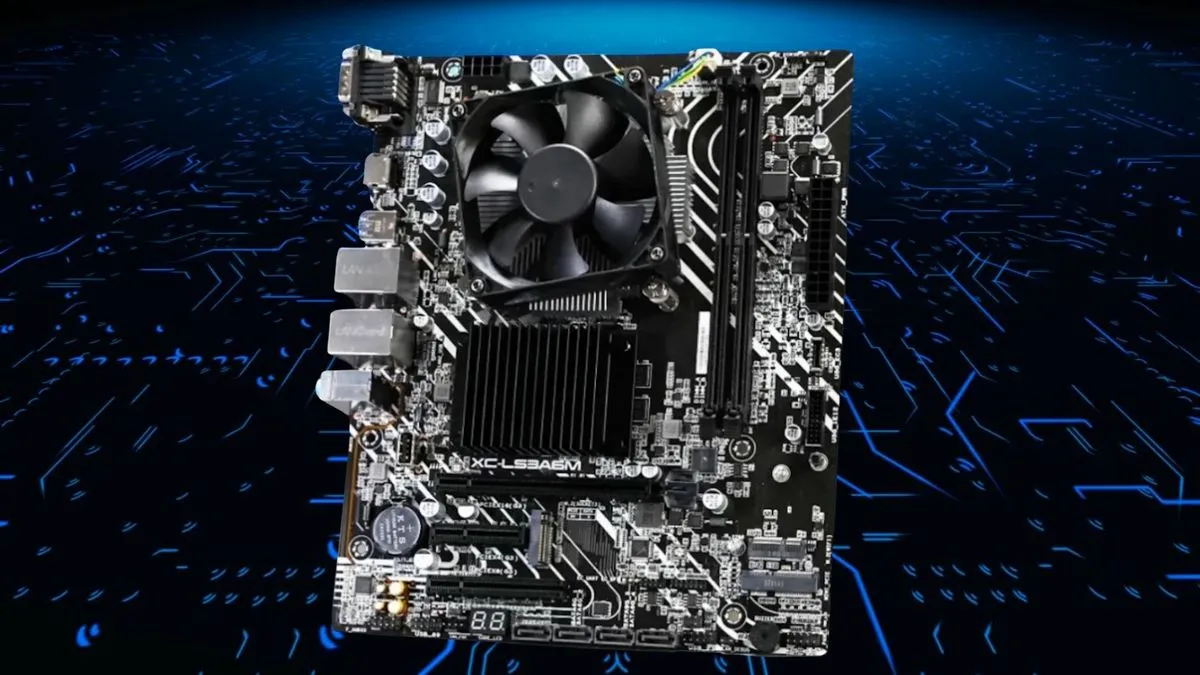- cross-posted to:
- [email protected]
- [email protected]
- [email protected]
- cross-posted to:
- [email protected]
- [email protected]
- [email protected]
They’re not show-stoppers compared to Western tech, but they could still be good workstations.
not every pc needs to be a monster; most people really don’t need a desktop much more powerful than a high-end phone. the gains loongson has made in power efficiency is a good track to be on.
Exactly, especially when running Linux that doesn’t have all the bloat of windows or macos. I also imagine that top priority is replacing western hardware and software in use by the government. You don’t need bleeding edge hardware to do email, spreadsheets, and document editing.
It’s not like you have any choice other than GNU/Linux if you get a LoongArch based computer lol. I don’t think Apple will ever give a shit and Microsoft currently only has an ARM port of Windows which mostly works on some aarch64 boards. It’s obviously a move to make themselves more independent of western closed source garbage.
You don’t need bleeding edge hardware to do email, spreadsheets, and document editing.
emacs ftw.
lol emacs might be a bit too intense for your average office worker :)
What, you are saying I don’t need a watercooled 7800x3d to check my email!? Next you will be insinuating I don’t need a 4090 for Minecraft.
Even if they aren’t “show-stoppers”, it’s great to see more alternatives emerging. Shouldn’t the free market love more competition?
People seem to be arguing that $375 is too expensive for a board, but are they just missing the fact that it’s a bundle with the CPU and cooler? The 3A6000 apparently is roughly equivalent to an intel 10100. (which is about $100 MSRP these days). DDR4 is fine for most people’s use cases, and it seems like it has enough PCI and nvme slots that anybody would really need. It also pulls less power than most intel chipsets, which could definitely be of interest to people.
You aren’t building a high end video editing or gaming rig with this, but it seems like it’d be a perfectly respectable every day use machine. Which is exactly the type of chips I would expect them to make first.
I would not be surprised if we see Lonsoon continue to make more and more competitive chips going forward too.
I am not sure if these are currently (ongoing inflation woes aside) competitive enough from a western market perspective given the built-in sinophobia; they have to be exceptionally good value for quality or have no meaningful competition for a chinese name brand (security cameras such as Dahua as an example amongst others, and another tangent example would be Polestar which though is owned by Geely is considered “swedish” ). However, I don’t think that’s the point; like you said these may be the beginning of much more competitive products given track records in all other fields.
If one takes a less eurocentric view; the above board/cpu bundle is nothing short of amazing. A middle income country while undergoing military seige, sanctions and hybrid wars is able to produce and sell a consumer product higher in the tech-chain in a market that openly declares the producing country a national enemy is market strategy all of these MBAs could not concuct in their wildest dreams. And obviously this is not the only - let alone first - example of this.
It’s almost as if marxists know how to play in the game of capitalism better than liberals through a deeper and more meaningful understanding of the system.
Ironically one of the best investor’s handbook over the past century still remains to be Das Kapital.
What relevant x86-64 patents do AMD & Intel still hold, and if any, is Loongson somehow getting around some or all of them?
Loongson is MIPS based, so presumably it doesn’t rely on any x86 related patents.
I haven’t looked at the instruction set, but I’ve heard it described as being closer to risc-v. Targeting linux (and probably bsd’s) is a big w, esp for openkylin adoption in the mainland and displacing the m$ monopoly. I’d really like to get my hands on one of these 6k series soon.
I read that it was derived from MIPS originally, but it’s been heavily modified since. I’m very excited about China doubling down on Linux finally.
Me too. GNU + Chinese characteristics lets goooo
They have published documentation of the ISA in english though it’s not complete: https://loongson.github.io/LoongArch-Documentation/README-EN.html
gcc and qemu already support la64 so cross compiling and basic testing is already possible for anyone.
damn, that’s so cool
Keep in mind gcc even supports the still undocumented instructions (at least in the english world) such as the vector instructions for 128 and 256-bit vector registers. That’s probably because people at Loongson were responsible for the implementation. They also maintain their own soft-forked Linux kernel and their patches eventually make it into mainline. Their soft-fork is more bleeding edge though I guess.
Their older chips are indeed MIPS based, but the newer ones (including the ones this article is talking about) are using their own LoongArch ISA, which while has a few similarities to MIPS, is not the same.
Here’s some official LoongArch documentation in English and a very nice blog by WÁNG Xuěruì who is quite involved with the porting of quite a few large projects (the Linux kernel itself, Gentoo, LLVM, Rust, and Go) to LoongArch if you’re interested in reading up about it.
They’re quite solid chips for basic desktop/office use, and even some very light gaming if paired with a compatible graphics card in my testing. Hopefully Loongson can manage to make a dent in the x86(_64) monopoly in a decade or so :)
Ah neat, thanks for the info. Looks like it really is its own thing now, and makes a lot of sense for the use case of moving the government onto domestic tech.
If I’m understanding the article correctly it suggests that this chip is x86_64 compatible?
Loongson has its own instruction set similar to MIPS/RISCV which primarily targets Linux. IIRC there are windows builds that can run on the chip, but that says nothing for most of the windows software which is compiled for for x86/x86_64. Linux shines here because most everything that’s open-source can simply be recompiled by anyone and/or made available through binary distribution repos.
Seems really odd to me that they are using DTX.
I’m guessing it’s intended to be a easy swap for a legacy OEM computer.
But they do have the 2nd better board that’s mATX.
I’d love to see an itx board.
i want one if for no other reason than to make everyone else uncomfortable









